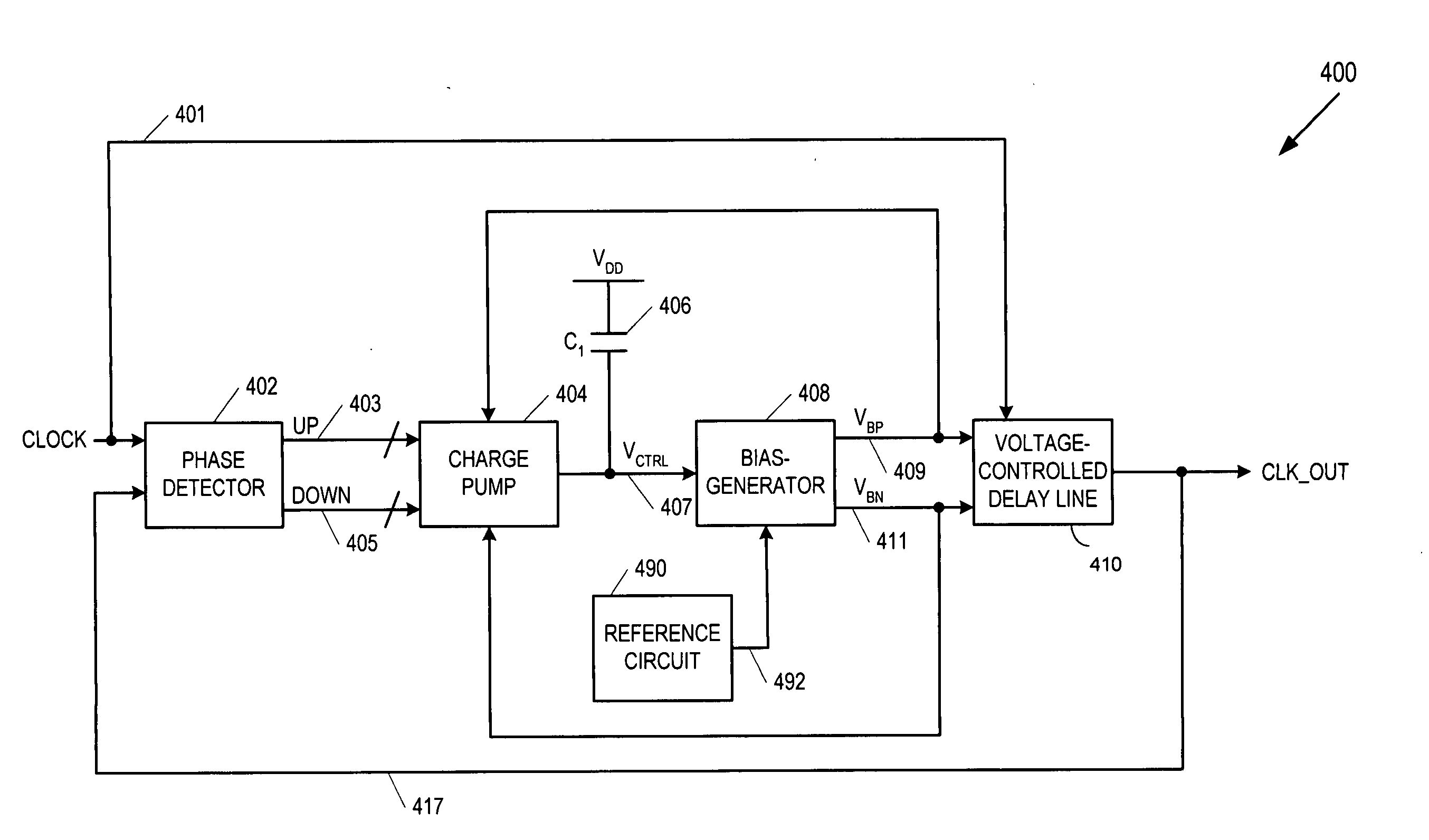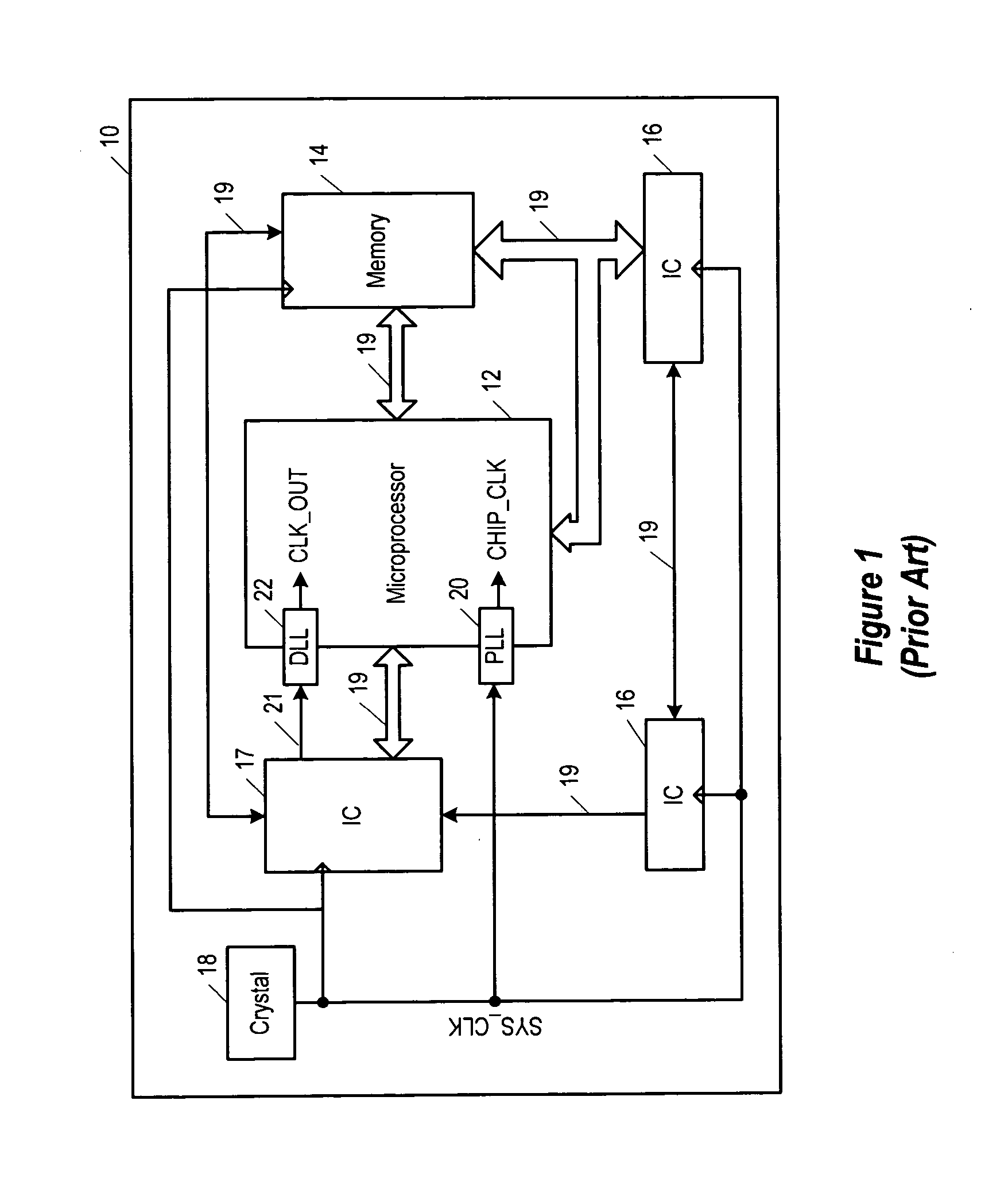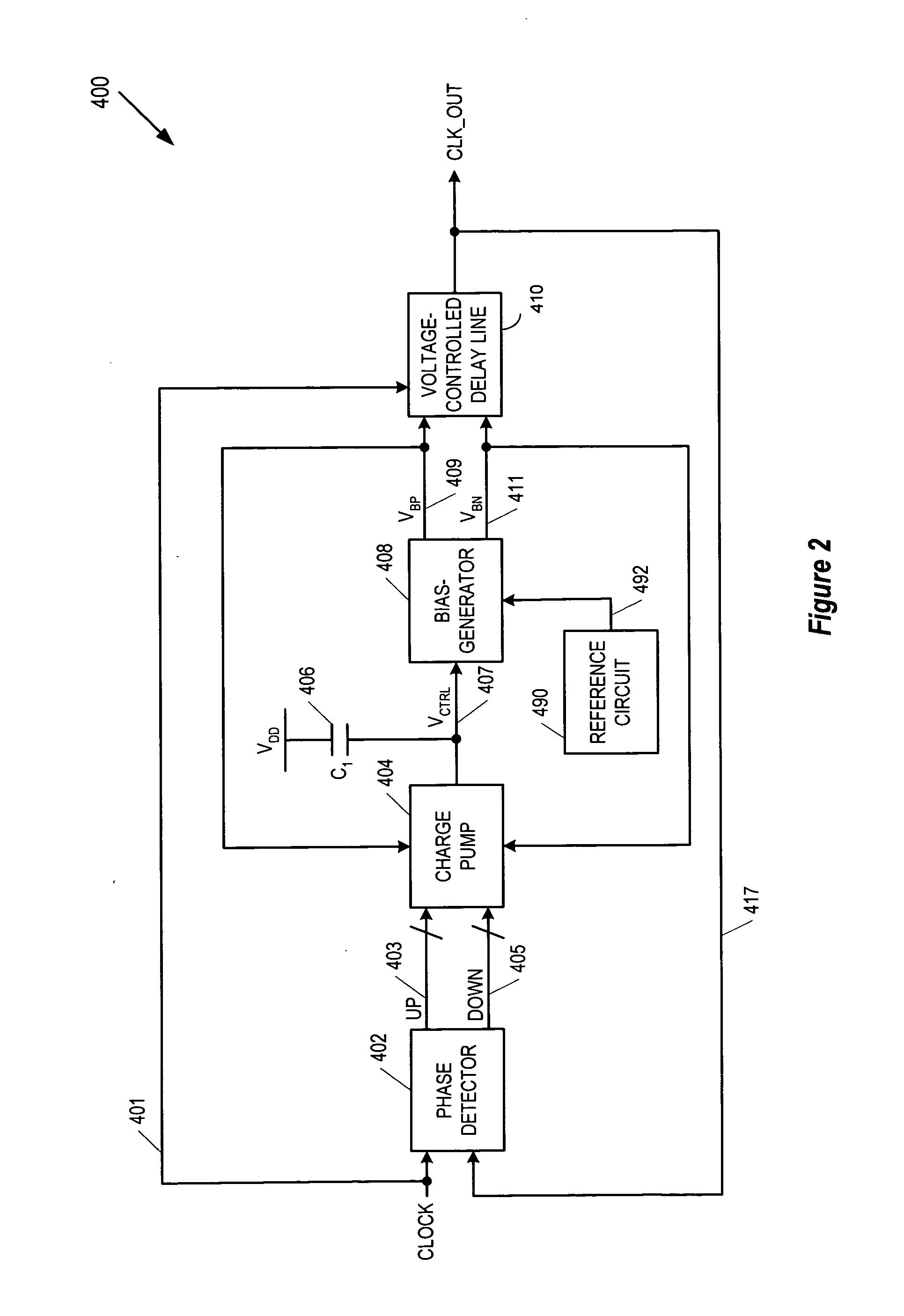Compensation technique to mitigate aging effects in integrated circuit components
a technology of integrated circuit components and compensation techniques, applied in pulse techniques, optical radiation measurement, instruments, etc., can solve the problem of voltage-delay curves that remain relatively constant on voltage-control delay lines, and achieve the effect of effective solution
- Summary
- Abstract
- Description
- Claims
- Application Information
AI Technical Summary
Benefits of technology
Problems solved by technology
Method used
Image
Examples
Embodiment Construction
[0023] As shown in FIG. 1, a typical computer system 10 has, among other components, a microprocessor 12, one or more forms of memory 14, integrated circuits 16 and 17 having specific functionalities, and peripheral computer resources (not shown), e.g., monitor, keyboard, software programs, etc. These components communicate with one another via communication paths 19, e.g., wires, buses, etc., to accomplish the various tasks of the computer system 10.
[0024] In order to properly accomplish such tasks, the computer system 10 relies on the basis of time to coordinate its various operations. To that end, a crystal oscillator 18 generates a system clock signal (referred to and known in the art as “reference clock” and shown in FIG. 1 as SYS_CLK) to various parts of the computer system 10. Modem microprocessors and other integrated circuits, however, are typically capable of operating at frequencies significantly higher than the system clock signal, and thus, it becomes important to ensu...
PUM
 Login to View More
Login to View More Abstract
Description
Claims
Application Information
 Login to View More
Login to View More - R&D
- Intellectual Property
- Life Sciences
- Materials
- Tech Scout
- Unparalleled Data Quality
- Higher Quality Content
- 60% Fewer Hallucinations
Browse by: Latest US Patents, China's latest patents, Technical Efficacy Thesaurus, Application Domain, Technology Topic, Popular Technical Reports.
© 2025 PatSnap. All rights reserved.Legal|Privacy policy|Modern Slavery Act Transparency Statement|Sitemap|About US| Contact US: help@patsnap.com



